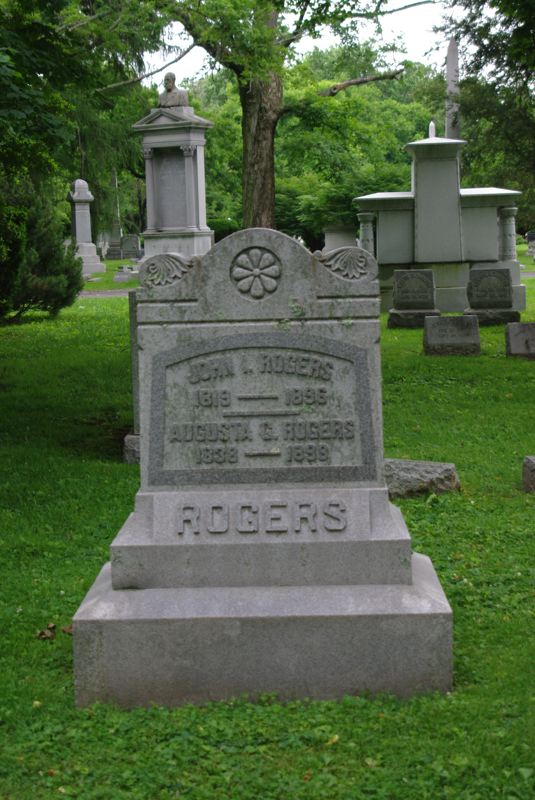John I. Rogers
1819 -1896
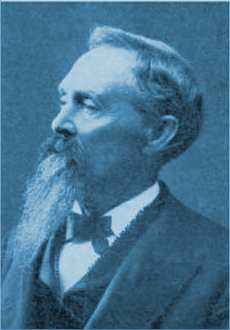
Biographical Sketch On The Life Of John I. Rogers
John I. Rogers, son of Samuel and Elizabeth Irvine Rogers, was born in New Antioch, Ohio, January 6, 1819, and died near Hutchinson, Bourbon county, Kentucky, September 28, 1896. Being the eldest son of a family of ten, he early became largely the dependence of his younger sisters and brothers, while his father was in the wilds of Indiana and Missouri preaching the Word to the earnest backwoodsmen of the West. As a boy, he was his mother's joy; always faithful and true to the duty next to him. When he was a youth of sixteen his father moved to Indiana. Here, with Ben Franklin and others, he gave himself to Christ, and determined at once to preach. Soon after this he entered old Bacon College. He determined to equip himself for the work of an evangelist. He had been at school only two years when at the earnest solicitations of John T. Johnson, he consented to be his Timothy and to go everywhere preaching the Word. This was in 1842. In 1844 he married Lucinda Pearce Ficklen. His work now was confined principally to the counties of Fleming and Mason. In 1853 his wife dying, he moved to Millersburg. He married Lucy Ficklen, a cousin of his first wife. He continued to preach at Millersburg and Ruddels Mills until 1857, when his wife dying, he preached for Cynthiana, Lexington, and Versailles, until 1862. At this time he was for a year or so under the direction of the Home Missionary Board and built and paid for the church at what was then the borderland of civilization, Fort Leavenworth, Kansas. In 1862 he married Mrs. Augusta Rankin, of Georgetown. After preaching for Millersburg and Cane Ridge, at the close of the war, he went South and labored for the churches of Selma and Marion, Alabama. In 1869 he came back to Kentucky. He preached acceptably for the church in Danville for several years and also for the First Church, Covington. In 1875 he moved to his farm at Hutchinson, and became a true worker for Kentucky Missions. He worked everywhere in the state; he could fit in anywhere; he was always at home--in the mountain cabin, the frame house of the "Pennyrile," or the brick mansion of the Bluegrass. It has been said of him that he knew more people in Kentucky than any preacher or politician of the state. He was essentially a preacher. He loved the old Jerusalem gospel and believed in its power to save. Elder John Sweeney said at his funeral, "For fifty years I never heard of John I. Rogers nor never met with him that he was not going to a meeting or coming from one. He was the best type of preacher among us: always going, going." He was not acrid in his old days--indeed he was never old, although nearly seventy-eight.
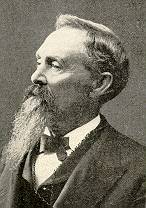 As Geo.
Darsie often said, "He is the youngest old man I ever knew." He was a
generous man. He never forgot to father his brothers and sisters who needed his
help, even when he had a family of his own. Brother John in the old home was a
saint for the large hand and heart he had. He was a brother to his negroes. I
have known him to buy negroes to save them from the slaves going South. His
life, from the cradle to the grave, was along this line: "To remember those
in chains as bound with them." Of all forms of orthodoxy this is the best.
As Geo.
Darsie often said, "He is the youngest old man I ever knew." He was a
generous man. He never forgot to father his brothers and sisters who needed his
help, even when he had a family of his own. Brother John in the old home was a
saint for the large hand and heart he had. He was a brother to his negroes. I
have known him to buy negroes to save them from the slaves going South. His
life, from the cradle to the grave, was along this line: "To remember those
in chains as bound with them." Of all forms of orthodoxy this is the best.
In August, 1896, he attended the State Convention at Georgetown. He made his home with Mr. and Mrs. Simeon Wells during his stay there. He was weak and knew that the time of his departure was at hand, and yet he was cheerful and would tell of old Fleming and the glad days when he was full of hope and happiness. His last words to the workers in that convention I shall never forget. He said: "The worker is nothing; God is all--believe in Him." He went home, took his bed, and, lingering a few weeks entered into life. A few hours before his death he had a heavenly experience in the presence of God in his soul. The vision was glorious and the feeling ecstatic. His son, Augustus, who was with him at the time, said that his words about the placid state of his soul moved them all to tears of joy. I believe God certainly lifted him to a Pisgah before his weary, worn soul made its flight to the land of the Rising Sun. On the afternoon of the 29th many friends gathered at old Rossmore to say good-bye to his clay. Among our preachers, Chas. Louis Loos, John Sweeney, Mark Collis, Jno. T. Hawkins, and many others. After some beautiful songs by the Bible School boys and a prayer by Chas. Louis Loos, John Sweeney made the funeral sermon. Then his body was lifted up by loving hands and laid away to rest in the beautiful cemetery in Lexington, where now rests his faithful wife and three of their children.
"Blessed are the dead who die in the Lord, yea from henceforth saith the Spirit, they rest from their labors and their works do follow them."
-Churches Of Christ, John T. Brown, ed. John P. Morton & Co. Louisville, KY, page.445, 446
Addenda: J. I. Rogers was from a family of gospel preachers, John I. Rogers was the son of Samuel Rogers, the great traveling preacher of the early Restoration Movement. His brother, William C. Rogers, writer of Recollections Of Men Of Faith, preached in Tennessee & Missouri. John I. was a missionary to many places. Once he served in Marion, Alabama, near Montgomery. When Alexander Campbell made his famous trip to New Orleans to raise money for a new college (Bethany), he stopped and preached where Rogers lived. Rogers was a writer. He edited the famous autobiography of his father, Samuel. He worked closely with his uncle, John Rogers, the famous preacher that traveled with "Raccoon" John Smith after the 1832 union between Campbell and Barton W. Stone. John I. Rogers represents the move to the second generation of gospel preachers in this movement of restoring New Testament Christianity.
![]()
Directions To Grave: Lexington Cemetery is one of the most beautiful old cemeteries in America. It is located on West Main Street heading away from downtown Lexington toward Leestown Pike. Turn right into the main entrance past the office. Stay on Main Avenue passing Henry Clay Monument on the left. Go until you see Section "K" on the right. Just before the end look to the right. The grave is a few marks in.
GPS Location
38°03'30.2"N 84°30'26.5"W
or D.d. 38.058376,-84.507364
Section K
![]()
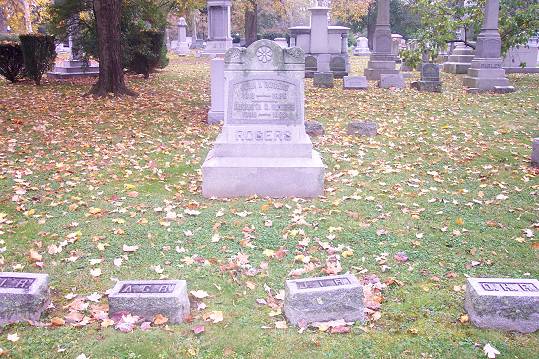
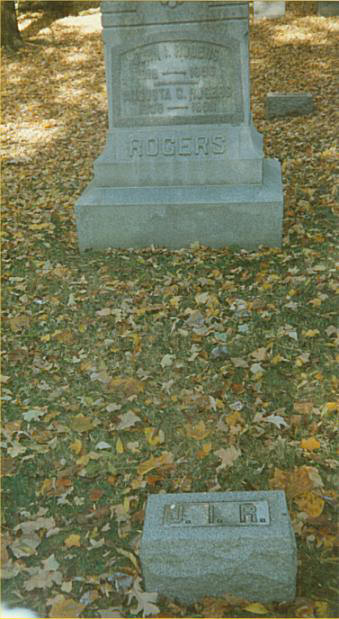
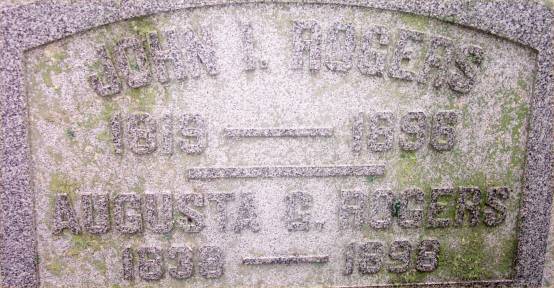
John I. Rogers
1819-1895
Augusta C. Rogers
1838-1898
![]()
